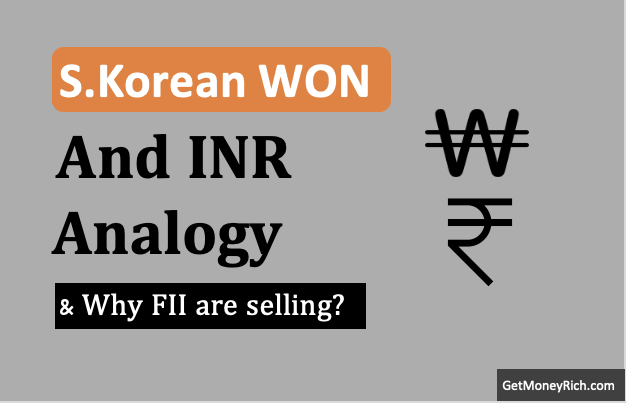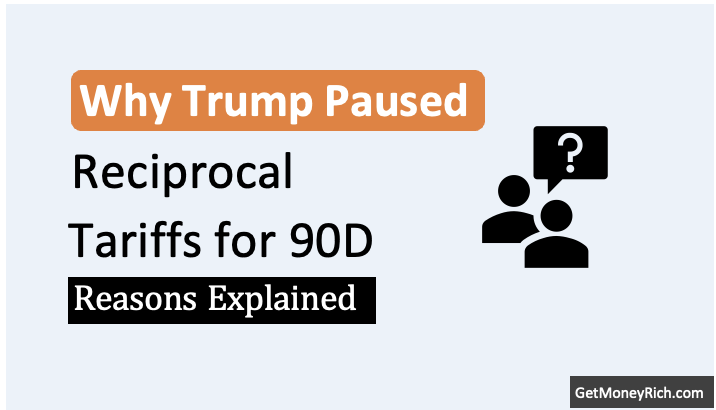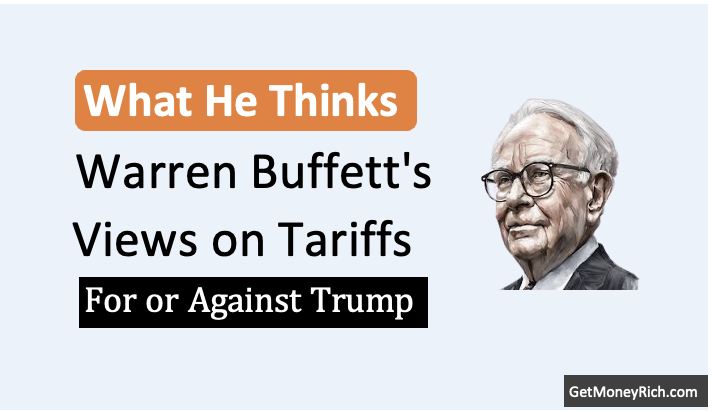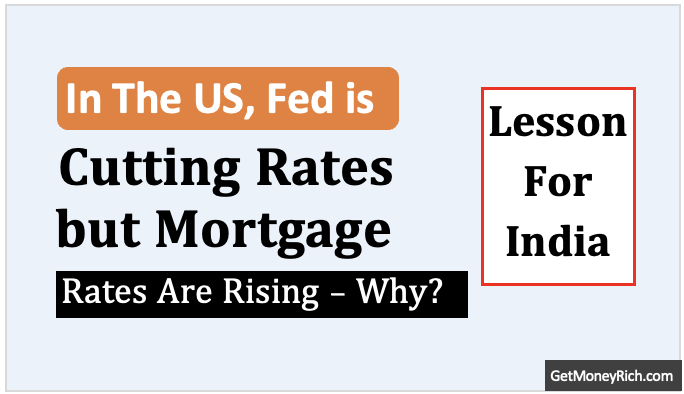Summary Points:
- Trump’s tariffs started with China, Canada, Mexico in January.
- April 2nd brought massive reciprocal tariffs globally.
- Markets crashed, like a -12% S&P 500 drop (in 30 days).
- China and others hit back with their own tariffs.
- Even Americans are upset over rising costs, layoffs.
- Did Trump expect this chaos or misjudge it?
- Maybe it’s strategy, maybe a big overreach – time’ll tell. Jump to the conclusion from here
Introduction
Ever since Donald Trump began his second term back in January, the talk of tariffs has been the focus of the world news. It started closer to home for the US, Canada, Mexico, but then on April 2nd, we got the big one: a formal announcement of reciprocal tariffs targeting countries across the globe. And honestly, the reaction has been intense.
It really makes me stop and think. Did President Trump and his team anticipate the kind of economic storm that would follow? Because what we’ve seen since April 2nd feels less like a calculated policy move and more like someone kicked over a sleeping monster.
[Note: May I also ask you to also watch this MSNBC video and hear the anchor stating from where Donald Trump got this idea of Tariffs in the first place (Watch it 5:32 onwards). Though, there are also reports saying that Donald Trump had this idea of Tariffs since 1987 days. But he started pitching this theory more aggressively when he stood for the President for the first time (2015).]
The Markets Get Spooked
The first sign of trouble, as often happens, came from the stock markets of across the globe.
Right after the announcement, the US markets themselves took a significant hit. They are calling it a big correction.
Did he foresee the market turmoil?
Trump’s public statements suggest he views short-term economic disruptions as a necessary cost for long-term gains. On April 3, 2025, he dismissed market declines as “to be expected” and framed the economy as undergoing a “transition period,” predicting an eventual boom (read more of his reply here).
This indicates he anticipated some negative reaction but believes that it would be temporary.
His confidence may stem from a belief that tariffs give the U.S. leverage to force concessions from other nations. He has claimed that “every country has called us” to negotiate. However, the severity of the market response, such as the S&P 500’s drop of nearly -12% in last 1 month, is the worst since 2020.
The market’s negative reaction to his announcement might have exceeded his expectations, especially given the global stock market has also been badly effected.
Global Tremors and Retaliation
We didn’t have to wait long for the international reaction.
China, a major trading partner for the US, didn’t just sit back. They responded quickly with their own retaliatory tariffs on American goods. This tit-for-tat is exactly what economists always warn about. A trade conflict escalating into something bigger, something messier.
And it’s not just China. Markets worldwide have been shaky.
There’s a sense of uncertainty, a feeling that the established rules of global trade are being rewritten on so casually.
Even the World Trade Organization (WTO), the very body the US helped create to manage global trade smoothly, is reportedly unhappy. When the architect of the system starts ignoring the blueprints, where does that leave everyone else?
It sends a very wrong message about commitment to international agreements.
I think, Trump was expecting a strong global reaction because it aligns with what he has faced in the past like retaliation from China, Canada, and the EU, and condemnation from allies like Japan and South Korea.
But his team, including trade advisor Peter Navarro, has portrayed tariffs as a non-negotiable “national emergency” measure, not a bargaining chip. What does it say? It is a clear hint that the US is not flexible on tariffs. This hardline stance likely fueled the intensity of the global outrage. Even the WTO warned of a potential 1% contraction in global trade, which is further fuelling the global reaction.
There is also an alternative point. Trump pausing their contributions to the WTO in March 2025 (before his 02-April-2025 announcement) signals he expected a backlash. But the unified resistance from trading partners, including threats of a “tariff war,” may have caught him off guard in its speed and scale.
Not Everyone’s Cheering at Home Too
Domestically, Trump likely expected a more positive reception from his base. They have historically supported his “America First” rhetoric.
During his first term, tariffs were praised by some manufacturing sectors and workers in states like Ohio and Pennsylvania. Even if the imposed tariffs raised costs for consumers and other industries, there were people who supported it.
There were people in the US (in this first term) who believes that Trump has framed tariffs to “enrich our citizens” rather than “taxing the citizens to enrich other countries.” I think Trump hoped for similar approval this time too.
But this time, the broad scope of these tariffs, hitting household staples like coffee and auto parts, has sparked widespread concern. Retirees, businesses, and consumers are reportedly frustrated, with some pausing big purchases and others facing layoffs (e.g., Stellantis cutting 900 U.S. jobs).
To me, this suggests a miscalculation. He may have underestimated how directly and immediately the public would feel the pinch, overshadowing any perceived patriotic upside.
Miscalculation or Bold Strategy?
This brings us back to the main question, Did Donald Trump foresee this level of fallout or not? Was this global market anxiety, the retaliatory strikes, the domestic unease, was it all part of the plan?
Some might argue it’s classic Trump, shake things up, disrupt the status quo, and negotiate from a position of perceived strength, even if it causes short-term pain. The idea might be to force concessions from other countries down the line.
It’s a high-stakes gamble, betting that the US economy is resilient enough to withstand the storm and that other countries will eventually blink.
But others, looking at the sheer scale of the negative reaction, might say this looks like a serious miscalculation.
Did they underestimate the interconnectedness of the global economy? Did they misjudge how quickly and strongly other nations would push back? Did they overestimate the domestic appetite for an economic fight that could hit ordinary people’s wallets?
It’s hard to say for sure what goes on behind closed doors. But from the outside, watching the events unfold since late January this year, it feels like a drastic move. It has unleashed forces perhaps more powerful and chaotic than expected.
The “turmoil,” as some may call it, is undeniable. Whether it’s a temporary storm before a new calm or the beginning of a more fractured and unpredictable era for global trade, well, that’s something only time will tell.
In my view, Trump likely expected the pushback, but overestimated his ability to control the narrative and outcomes. He is still assuming that the markets would rebound quickly, Americans would rally behind the “fair trade” banner, and foreign leaders would cave under pressure. But the synchronized global market fallout, consumer anxiety, and retaliatory tariff suggest he underestimated the complexity of his decision.
Conclusion
Has Trump miscalculated?
It depends on his goals. If he aimed to jolt the global trade system and assert U.S. dominance, the turmoil could be seen as proof of his disruptive influence.
In his first-term, tariffs did spur some adjustments. It forced trade talks, like the USMCA, which he might view as a playbook. Yet, the economic data so far, $2.4 trillion in S&P 500 losses, a projected 0.7% U.S. GDP drop, and $1,900 in added household costs, suggests the costs are steeper than he may have planned.
Politically, the domestic backlash and global isolation could erode his support faster than he anticipated. It will become especially true if inflation really spikes or recession fears materialize (JPMorgan now sees a 60% chance by year-end).
Unlike his first term, where tariffs were more targeted, the 2025 blanket approach risks alienating even his allies in Congress.
What are your thoughts on this? Do you think this was a calculated risk or a step too far? Let me know in the comments section below.


![What's India’s Google Tax [Explained] - Thumbnail](https://ourwealthinsights.com/wp-content/uploads/2025/03/Whats-Indias-Google-Tax-Explained-Thumbnail-768x462.png)



